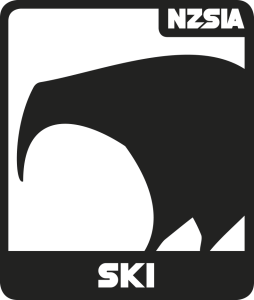Psychomotor Development
An awareness of children’s psychomotor development will help an instructor to understand why and how children move the way they do. Many of these differences can be explained by the stage of psychomotor development they are at, rather than just their size or their amount of experience on skis. This means many of the movements children make when they are learning to ski are dictated by the fact that they are children, not simply that they are beginners. These can be referred to as “real” versus “ideal” movements, based on where they are developmentally. By taking these factors into consideration, the instructor can adapt the lesson to suit what and how a particular movement, or movement pattern, is taught.
Muscles and Bones
Development of motor control
Development of Coordination
During the elementary stage, from age three or four years through to age eight, the focus is on moving in the environment. Children gain control of their bodies by moving themselves around objects or people. Spatial awareness develops and exploring their surroundings becomes a key
motivator.
During the mature stage, from approximately eight years through to about eleven years, movements become relatively well coordinated, mechanically correct and more efficient. Muscular and skeletal movements are coordinated and both the messages being sent to the brain and the brain’s responses are much smoother.
Centre of Gravity
Sensory Development
Kinaesthetic Development
Visual Development
Auditory Development
How Children Learn Psychomotor Skills
The perceptual motor system can be divided into three areas: the sensory mechanism (how the child receives information), the interpretive process that takes place in the brain, and the body’s response to that information. Information for performing motor skills comes from two basic sources. The first source is the external environment (extrinsic) i.e. what causes our senses to be activated (such as seeing or hearing). The second source is from themselves (intrinsic) i.e. how/what they think or feel (such as movement-kinaesthetic awareness). The brain assembles the input from the senses and identifies it as a meaningful whole. For example, if a child is sliding along on skis and sees an object in the path, the brain interprets this as an obstacle that needs to be avoided. Then the brain has to select an appropriate response. If children have no prior experience with avoiding obstacles on skis stored in their memory, the brain draws on any related experiences to develop an avoidance strategy. This is known as transfer of learning, or the gaining of proficiency in one task, as a result of practice or experience with another task. The muscles and eyes send information to the brain to be stored as a memory of the movement itself. The brain compares this to the desired result. If the actual result does not match the desired result, the brain tries a different approach next time. Thus, the skier develops appropriate responses through trial and error.
It is the instructor’s job to teach appropriate and efficient movements so there is less “trial and error” for the skiers. Using good demonstrations and clear explanations give them the visual and auditory information that will help them select appropriate responses. Setting up guided practice time and allowing for repetition helps the skiers feel sensations associated with certain movements to ensure that learning continues

Hot Tip


